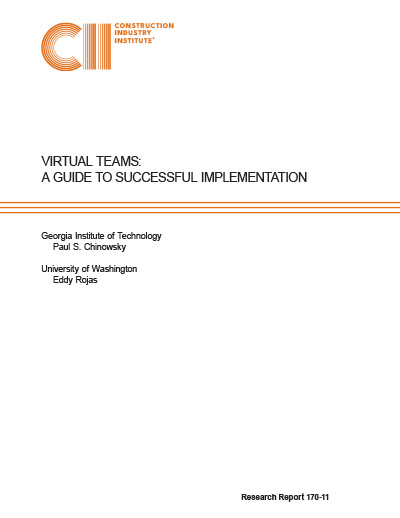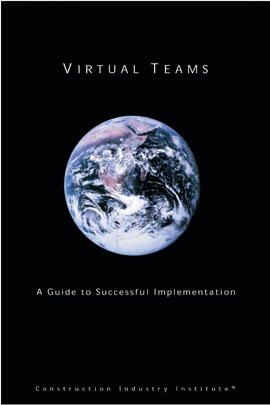
Virtual Teams: A Guide to Successful Implementation
Virtual teams are receiving increasing attention within the construction industry. As companies and projects increasingly utilize multi-national and multi-organizational partnerships, the need for greater and more efficient communication alternatives is also increasing. However, little guidance currently exists to assist an organization in the successful implementation and management of these teams. In an effort to fill this information gap, Project Team 170 was formed in April 2000 to study the topic of Making Virtual Teams Work. The scope of this effort included the examination of current research on the topic, a study of current virtual team practices within the industry, the study of cases outside the EPC industry, and the development of recommendations for successfully implementing virtual teams in the EPC industry.
The immediate issue that organizations discover when approaching the topic of virtual teams is defining what virtual teaming actually encompasses. Therefore, to assist CII members in pursuing this topic, PT 170 developed the following virtual team definition:
|
A virtual team is a group of people with complementary competencies executing simultaneous, collaborative work processes through electronic media without regard to geographic location. |
The important concept is that virtual teams allow individuals or groups to collaborate on a project in real-time through electronic media. In this manner, the virtual team operates as an integrated team whose members may happen to be located in different parts of the country or world. The potential advantages of this type of collaboration are numerous including:
- Efficiency of project execution,
- Removal of physical boundaries,
- The integration and optimization of competencies, and
- The ability to form new partnerships.
The promise of these advantages has resulted in the majority of CII members believing that virtual teams will be a primary mode of project execution within five years. Concurrently, PT 170 also discovered that the construction industry in general and CII companies specifically, have not studied the full spectrum of issues associated with implementing virtual teams. Given that virtual teaming has not become a principal mode of communication within the construction industry, PT 170 set its focus on providing a set of guidelines and recommendations for virtual team implementation. The conclusions from this research can be summarized in the following statement:
|
Technology is not the barrier to successfully implementing virtual teams—Although technology can lead to virtual teaming failures, sufficient technology is available to successfully implement virtual teams. Rather, revising traditional management practices is the key to successfully initiating and implementing virtual teams. |
Although the management and technology issues presented in this research are not exhaustive in their coverage of the impact that virtual teams may have on an individual organization, they are designed to provide a foundation for individuals and organizations to begin examining their own readiness for successfully implementing virtual teams. Based on this research effort, the organizations that successfully address these issues will similarly achieve virtual team success.


